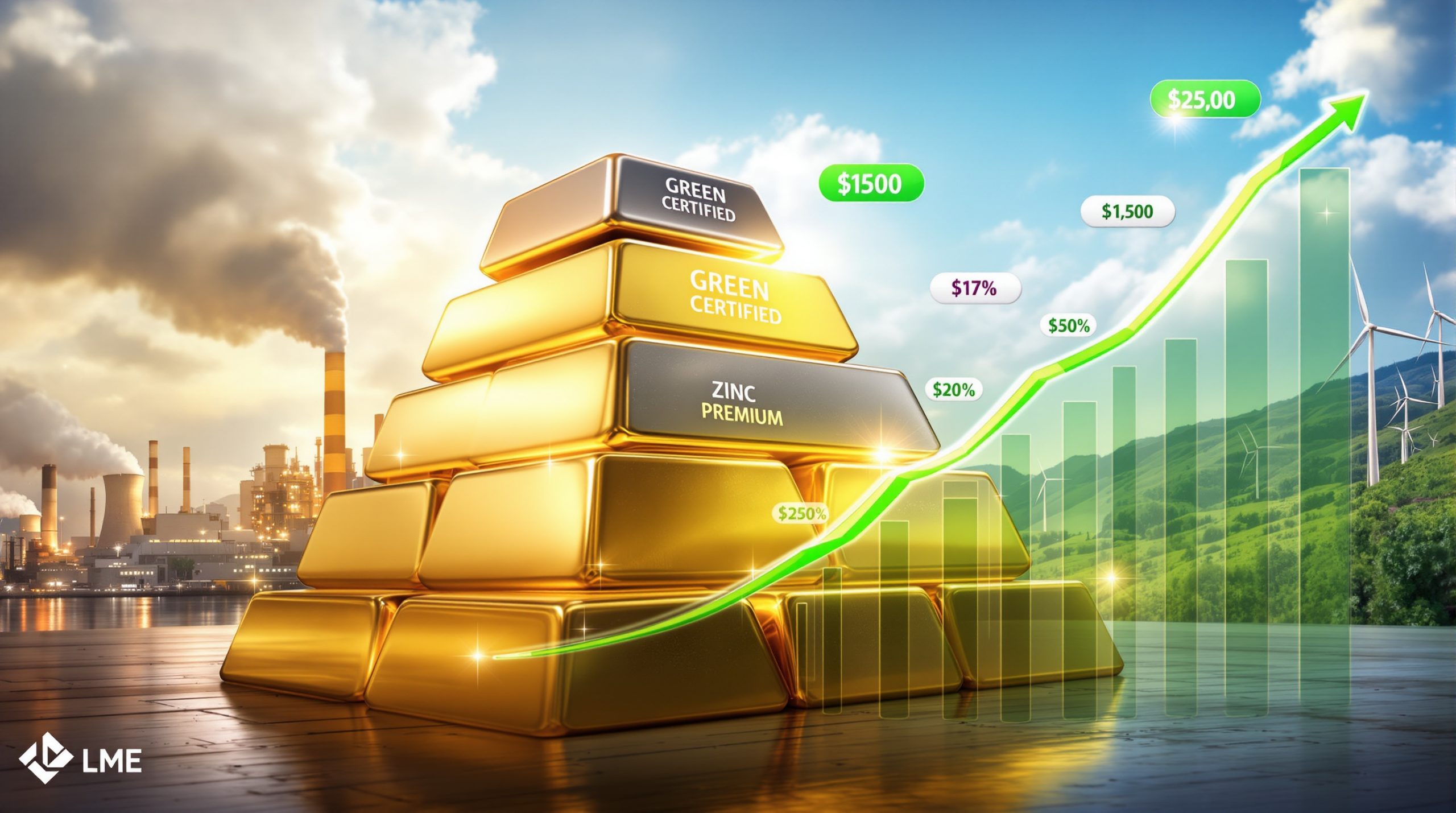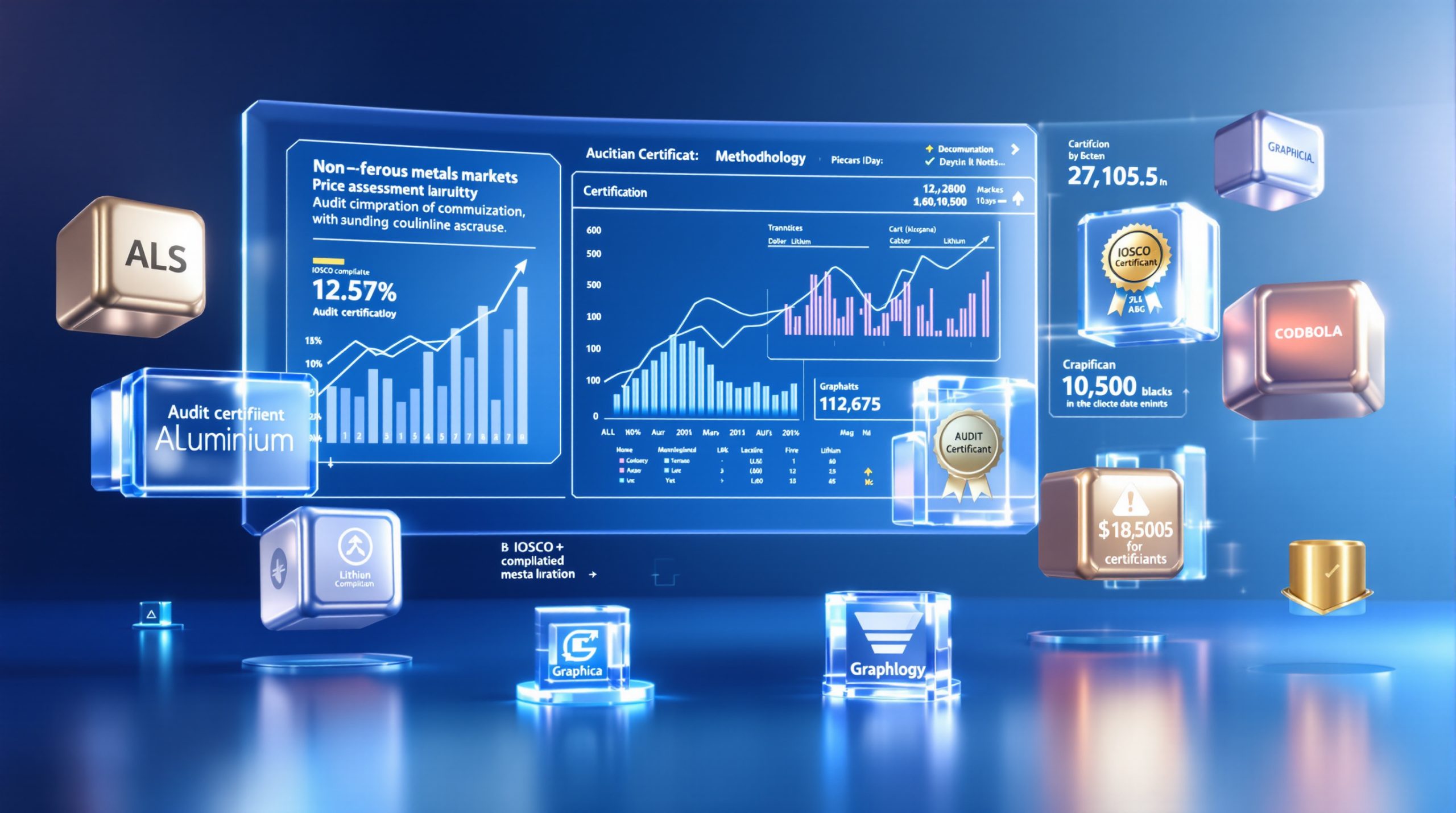Why Are Rare Earth Stocks Surging Right Now?
The rare earth market is experiencing a significant rally amid intensifying geopolitical tensions between major global powers. Investors are strategically positioning themselves in companies that can provide alternatives to China's dominant market position. This surge reflects growing concerns about supply security and strategic resource control in an increasingly fractured global economy.
Recent data from Bloomberg News reveals impressive stock performance across the sector. In October 2025, Australian rare earth stocks saw dramatic gains with Arafura Rare Earths rising 27% to a two-year high, Lynas Rare Earths climbing 8.5%, and Australian Strategic Materials jumping an astonishing 42%. Similar patterns emerged in the US market, with MP Materials reaching its highest-ever closing price after securing Pentagon backing.
Key Drivers Behind the Current Rally
- Escalating US-China trade war impacts creating uncertainty and driving investors toward alternative suppliers
- New export control announcements from Beijing affecting global supply chains
- Strategic minerals reserve initiatives in Western countries aiming to reduce dependence
- Defense sector demand growth driving investment in secure supply sources
- Supply chain diversification efforts by manufacturers and governments alike
The rally has been building momentum since April 2025, when China first threatened widespread industrial disruptions by implementing export controls on seven rare earths and products containing them. Market volatility has increased as these controls expand to cover more materials and applications, creating both risks and opportunities for investors.
How Are US-China Tensions Affecting Rare Earth Markets?
The rare earth sector has become a focal point in the geopolitical chess match between the United States and China. Recent threats by US President Donald Trump to impose massive tariffs on Chinese goods have reignited concerns about supply chain vulnerability. Beijing's response—expanding export controls on rare earth elements and related products—has created market volatility and driven prices higher.
These controls now extend beyond raw materials to products containing even minimal amounts of controlled rare earth elements, regardless of where they're sold globally. This extraterritorial application represents a significant escalation that could disrupt manufacturing supply chains worldwide.
The Latest Diplomatic Standoff
While Trump has reportedly sought to cool tensions with Chinese President Xi Jinping, the underlying structural issues remain unresolved. The dispute centers not just on trade balances but on technological supremacy and strategic resource control, with rare earths playing a central role due to their importance in advanced technologies.
The expanded export controls announced in October 2025 build upon measures first implemented in April of the same year. This systematic expansion suggests a strategic rather than tactical approach from Beijing, aimed at leveraging its dominant market position for long-term advantage.
China's Strategic Leverage
China's dominance in the rare earth supply chain gives Beijing significant leverage in trade negotiations:
| China's Position in Global Rare Earth Supply Chain | Percentage |
|---|---|
| Mining production | ~58% |
| Processing capacity | ~85% |
| Magnet manufacturing | ~90% |
| End-product integration | ~75% |
This control allows China to use rare earths as a strategic tool in international relations, creating market uncertainty that drives stock prices higher for non-Chinese producers. The latest measures are particularly concerning because they affect products sold anywhere in the world containing even minimal amounts of controlled materials.
Which Companies Are Leading the Rare Earth Stock Rally?
The current market dynamics have created clear winners across multiple regions, with companies positioned as alternatives to Chinese suppliers seeing the strongest gains. Investors are particularly focused on companies with existing production, advanced development projects, or strategic government backing.
Australian Players Making Major Moves
Australian rare earth stocks have seen some of the most dramatic gains:
- Arafura Rare Earths: Surged up to 27% to reach a two-year high, driven by its Northern Territory project development. The company is advancing the Nolans Project, which aims to produce separated rare earth oxides.
- Lynas Rare Earths: Climbed up to 8.5%, benefiting from its position as the largest established producer outside China. Lynas operates the Mt. Weld mine in Western Australia and a processing facility in Malaysia.
- Iluka Resources: Added up to 6.3% as investors seek diversified exposure to mineral sands and rare earths.
- Australian Strategic Materials: Jumped as much as 42% on supply security concerns, highlighting its Dubbo Project's strategic importance.
These gains reflect Australia's growing strategic importance in the rare earth supply chain, with the country considering establishment of a A$1.2 billion ($782 million) strategic minerals reserve.
US Companies Benefiting from Strategic Positioning
American rare earth companies have also seen substantial gains:
- MP Materials: Reached its highest-ever closing price after securing backing from the US Department of Defense. The company operates the Mountain Pass mine in California, the only active rare earth mining and processing facility in the United States.
- Other US-based miners: Experiencing increased investor interest as government support for domestic supply chains grows, including potential Pentagon stockpile initiatives.
The Pentagon's reported $1 billion critical minerals stockpile initiative has further boosted investor confidence in US-based suppliers.
Chinese Firms Bucking Broader Market Trends
Despite broader market declines in China, domestic rare earth companies have advanced:
- JL Mag Rare-Earth Co.: Gained up to 17% as a key magnets producer
- China Northern Rare Earth Group: Rose nearly 10%
- China Rare Earth Resources and Technology: Advanced up to 8.7%
This performance suggests that Chinese rare earth companies are seen as potential beneficiaries of export controls, likely due to pricing power and strategic importance.
What Strategic Initiatives Are Governments Implementing?
Governments around the world are responding to supply chain vulnerabilities with strategic initiatives designed to secure access to critical minerals. These measures range from stockpiling programs to international partnerships and domestic production incentives.
Australia's Mineral Security Strategy
Australia is positioning itself as a key alternative supplier through several initiatives:
- Considering establishment of a A$1.2 billion ($782 million) strategic minerals reserve
- Developing potential agreements with the US for supply chain cooperation
- Supporting domestic producers to scale operations and secure financing
According to a leaked departmental briefing paper reported by The Age newspaper, Australia is exploring a broad rare earths deal with the United States as part of these measures. This aligns with Australia's growing recognition of its strategic position as a key alternative to Chinese supplies.
US Strategic Response
The Pentagon is taking concrete steps to reduce dependence on Chinese rare earths:
- Providing financial backing to domestic producers like MP Materials
- Exploring creation of strategic stockpiles worth approximately $1 billion
- Developing processing capabilities within US borders
- Forming international partnerships with allied nations
Reports indicate the Defense Logistics Agency intends to purchase significant quantities of critical minerals, including $500 million of cobalt, $245 million of antimony, $100 million of tantalum, and $45 million of scandium. While this list doesn't explicitly mention rare earth elements, it demonstrates the broader defense critical materials strategy being adopted.
These initiatives reflect a fundamental shift in how governments view supply chains for critical minerals—moving from purely economic considerations to national security imperatives.
How Are Export Controls Reshaping the Market?
Export controls have emerged as a powerful tool in the geopolitical contest for control of critical mineral supply chains. China's expanding restrictions are creating both challenges and opportunities across the global rare earth sector.
China's Expanding Restrictions
China's recent export control measures represent a significant escalation:
- Initial controls (April 2025): Restrictions on seven rare earth elements and products containing them
- Expanded measures (October 2025): Controls extended to more rare earths and other critical commodities
- Global supply chain implications: Restrictions now apply to products sold anywhere in the world containing even minimal amounts
This progressive expansion suggests a systematic approach rather than a reactive measure, highlighting China's strategic use of its dominant market position.
Market Response to Control Measures
These restrictions have triggered:
- Price volatility: Spot prices for key rare earth oxides have increased
- Supply chain reassessment: Manufacturers seeking alternative sources
- Investment acceleration: Faster development of non-Chinese projects
- Stock rallies: Significant gains for companies positioned as alternative suppliers
The rare earth sector has experienced sustained gains since April 2025, representing approximately six months of elevated performance. This timeline suggests more than a short-term speculative spike, pointing toward structural changes in how markets value secure supply chains.
What Are the Long-Term Investment Implications?
The current rare earth stock rally differs from previous price spikes in fundamental ways, suggesting potential long-term structural changes to the market. Investors need to understand these shifts to effectively position their portfolios.
Structural Market Changes
The rare earth sector is undergoing fundamental transformation:
- Supply diversification: New projects advancing outside China with government support
- Vertical integration: Companies developing mine-to-magnet capabilities to secure full supply chains
- Government support: Increasing public funding for critical mineral security
- Price premiums: Non-Chinese supplies commanding higher prices due to security value
These changes are driven by geopolitical tensions rather than traditional supply-demand dynamics, making them potentially more durable than previous rare earth price cycles.
Investment Considerations
Investors should consider several factors when evaluating rare earth stocks:
- Project development timelines: Many alternative suppliers are years from production, requiring patient capital
- Processing capabilities: Mining alone is insufficient without separation technology—companies with both have stronger competitive positions
- Government relationships: Companies with strategic backing have advantages in financing and market access
- End-market exposure: Different rare earths serve different industries with varying growth profiles
The strategic nature of government involvement suggests support measures may continue regardless of short-term price movements, potentially providing a floor for well-positioned companies.
What Technical Factors Are Driving Specific Rare Earth Elements?
Understanding the technical applications of different rare earth elements is crucial for evaluating investment opportunities in the sector. Not all rare earths face the same demand dynamics or supply constraints.
Critical Applications Driving Demand
Different rare earth elements face varying demand pressures:
| Element | Key Applications | Supply Risk Level |
|---|---|---|
| Neodymium | Permanent magnets, EVs, wind turbines | Very High |
| Dysprosium | High-temperature magnets, defense | Extreme |
| Terbium | Phosphors, sonar systems | High |
| Praseodymium | Magnets, glass coloring | Very High |
| Samarium | Specialty magnets, cancer treatments | Moderate |
The elements with the highest supply risk levels generally command premium prices and create more significant opportunities for alternative suppliers.
Defense Applications Creating Premium Markets
Military and defense applications create particularly strong demand for certain elements:
- Guidance systems: Require high-performance magnets containing neodymium and dysprosium
- Communications equipment: Depends on specialized rare earth components for signal processing
- Radar technology: Utilizes rare earth-enhanced materials for sensitivity and performance
- Night vision devices: Incorporate rare earth phosphors using europium and terbium
The defense sector's willingness to pay premium prices for secure supplies creates opportunities for companies that can meet stringent quality and security requirements.
How Could This Rally Compare to Previous Rare Earth Booms?
To properly evaluate the current market cycle, investors should understand how previous rare earth booms developed and ultimately resolved. The current situation has both similarities and important differences compared to historical patterns.
Historical Context for Current Rally
The current rally shares similarities with previous rare earth booms but has distinctive characteristics:
- 2010-2011 Boom: Driven by Chinese export quotas, peaked quickly then collapsed as alternatives emerged and quotas were relaxed
- 2017-2018 Rally: Environmental crackdowns in China created temporary supply constraints that were eventually resolved
- Current Situation: Characterized by structural geopolitical tensions and strategic realignment rather than temporary policy changes
The 2010-2011 boom saw many development-stage companies reach unsustainable valuations before crashing as supply fears subsided. The current environment features more substantive government backing and strategic considerations.
Sustainability Factors
Several factors suggest this rally may have more staying power:
- Government backing: National security concerns driving sustained investment
- Supply chain restructuring: Fundamental changes to global supply networks
- Multiple demand drivers: EVs, renewable energy, and defense all growing simultaneously
- Processing capacity development: Investments in the full supply chain, not just mining
The strategic nature of current government initiatives differs from the reactive measures seen in previous cycles, potentially supporting a more durable price environment.
What Risks Could Derail the Rare Earth Stock Rally?
Despite the positive momentum, several risk factors could limit or reverse gains in the rare earth sector. Investors should carefully consider these potential challenges when constructing portfolios.
Market-Specific Challenges
Despite the positive momentum, several factors could limit or reverse gains:
- Technical challenges: Developing economically viable processing outside China remains difficult due to complex chemistry and environmental considerations
- Capital requirements: Building complete supply chains requires massive investment over multiple years
- Substitution risk: High prices may accelerate research into alternatives or material efficiency improvements
- Reconciliation scenarios: Any easing of US-China tensions could reduce supply fears and the security premium
The transcript notes that Trump executive order on critical minerals sought to cool the latest standoff with Chinese President Xi Jinping, suggesting that diplomatic de-escalation remains possible. Any substantive reduction in US-China tensions could reduce the supply security premium driving rare earth stock prices.
Broader Economic Considerations
Macroeconomic factors also pose risks:
- Recession concerns: Economic slowdown could reduce demand for consumer electronics and EVs
- Interest rate environment: Higher rates make capital-intensive projects more challenging to finance
- Chinese capacity expansion: China could increase production to maintain market share and undermine alternative suppliers
- Environmental permitting: New projects face regulatory hurdles in Western jurisdictions that may delay development
Investors should maintain realistic expectations about development timelines for new projects, which often exceed initial estimates due to technical, regulatory, and financing challenges.
How Should Investors Approach Rare Earth Stocks?
Navigating the rare earth sector requires specialized knowledge and careful portfolio construction. Different companies offer varying risk-reward profiles depending on their development stage and strategic positioning.
Due Diligence Essentials
Investors considering rare earth stocks should evaluate:
- Project economics: Many projects struggle with profitability despite high prices—capital costs, operating expenses, and recovery rates are critical
- Technical capabilities: Separation and processing expertise is as valuable as mining rights
- Offtake agreements: Secured customers reduce market risk and improve financing options
- Government relationships: Political support can accelerate permitting and financing
- Balance sheet strength: Development timelines often exceed initial estimates, requiring financial resilience
The transcript distinguishes between established producers like Lynas ("already a key global producer") and development-stage projects like Arafura ("developing a rare earths mine"), highlighting the importance of understanding a company's position in the development cycle.
Portfolio Positioning Strategies
Rare earth investments can serve different portfolio roles:
- Core holdings: Established producers with current revenue streams and proven operations
- Growth exposure: Advanced developers nearing production with clear path to cash flow
- Speculative allocation: Early-stage explorers with significant upside potential but higher risk
- Strategic metals ETFs: Diversified exposure to the broader critical minerals theme for investors seeking reduced company-specific risk
A balanced approach might include a mix of established producers and advanced developers, with smaller allocations to earlier-stage opportunities depending on risk tolerance.
FAQ: Understanding the Rare Earth Market Rally
What exactly are rare earth elements?
Rare earth elements comprise 17 metals on the periodic table that, despite their name, are relatively abundant in the Earth's crust. What makes them "rare" is the difficulty in finding economically viable concentrations and the complex processing required to separate them. They possess unique magnetic, luminescent, and electrochemical properties that make them essential in modern technology.
The 17 rare earth elements include the 15 lanthanides (lanthanum to lutetium) plus scandium and yttrium. They are typically divided into light rare earth elements (LREEs) and heavy rare earth elements (HREEs), with the latter generally being scarcer and more valuable.
Why does China dominate the rare earth market?
China established its dominance through decades of strategic investment, less stringent environmental regulations, and state support. While China contains approximately one-third of global rare earth deposits, it controls roughly 85% of processing capacity. This vertical integration gives China significant leverage in global supply chains.
China's dominance developed systematically beginning in the 1980s, when the government declared rare earths a strategic resource and provided substantial support for research, mining, and processing development. Many Western mines closed due to price competition from Chinese producers, further consolidating China's position.
Are there viable alternatives to Chinese rare earth supplies?
Yes, but with significant development timelines. Australia's Lynas is currently the largest non-Chinese producer. New projects are advancing in the United States, Canada, Australia, and Africa, but most require several years and substantial capital to reach production. The processing bottleneck remains particularly challenging to overcome.
Developing alternative sources faces several challenges:
- High capital costs for processing facilities
- Complex technical requirements for separation
- Environmental permitting hurdles
- Need for specialized workforce and expertise
- Securing financing without guaranteed offtake agreements
How do rare earth elements impact everyday technology?
Rare earth elements are essential components in smartphones (speakers, vibration motors, screen colors), electric vehicles (motors, batteries), wind turbines (generators), medical devices (MRI machines), and defense systems (guidance, radar). Without these elements, many modern technologies would be less efficient, heavier, or impossible to manufacture.
Specific applications include:
- Neodymium-iron-boron magnets in smartphone speakers and EV motors
- Europium, terbium, and yttrium in display screens and lighting
- Lanthanum and cerium in catalytic converters and glass polishing
- Samarium-cobalt magnets in precision motors and defense applications
- Gadolinium in MRI contrast agents
Further Exploration:
Readers interested in learning more about the energy transition and critical minerals can explore related educational content on MINING.com, which offers regular updates on developments in the critical minerals sector. Understanding the technical, geopolitical, and economic factors driving this market requires ongoing education as the situation continues to evolve.
The big pivot in critical minerals strategy by Western nations will continue to influence market dynamics and create both opportunities and risks for investors in this strategically important sector.
Want to Stay Ahead of the Next Major Mineral Discovery?
Discover why rare earth and critical mineral discoveries can lead to significant market returns by exploring Discovery Alert's dedicated discoveries page. Powered by the proprietary Discovery IQ model, Discovery Alert delivers instant notifications on significant ASX mineral discoveries, giving you the market-leading edge needed to capitalise on opportunities before the broader market.




